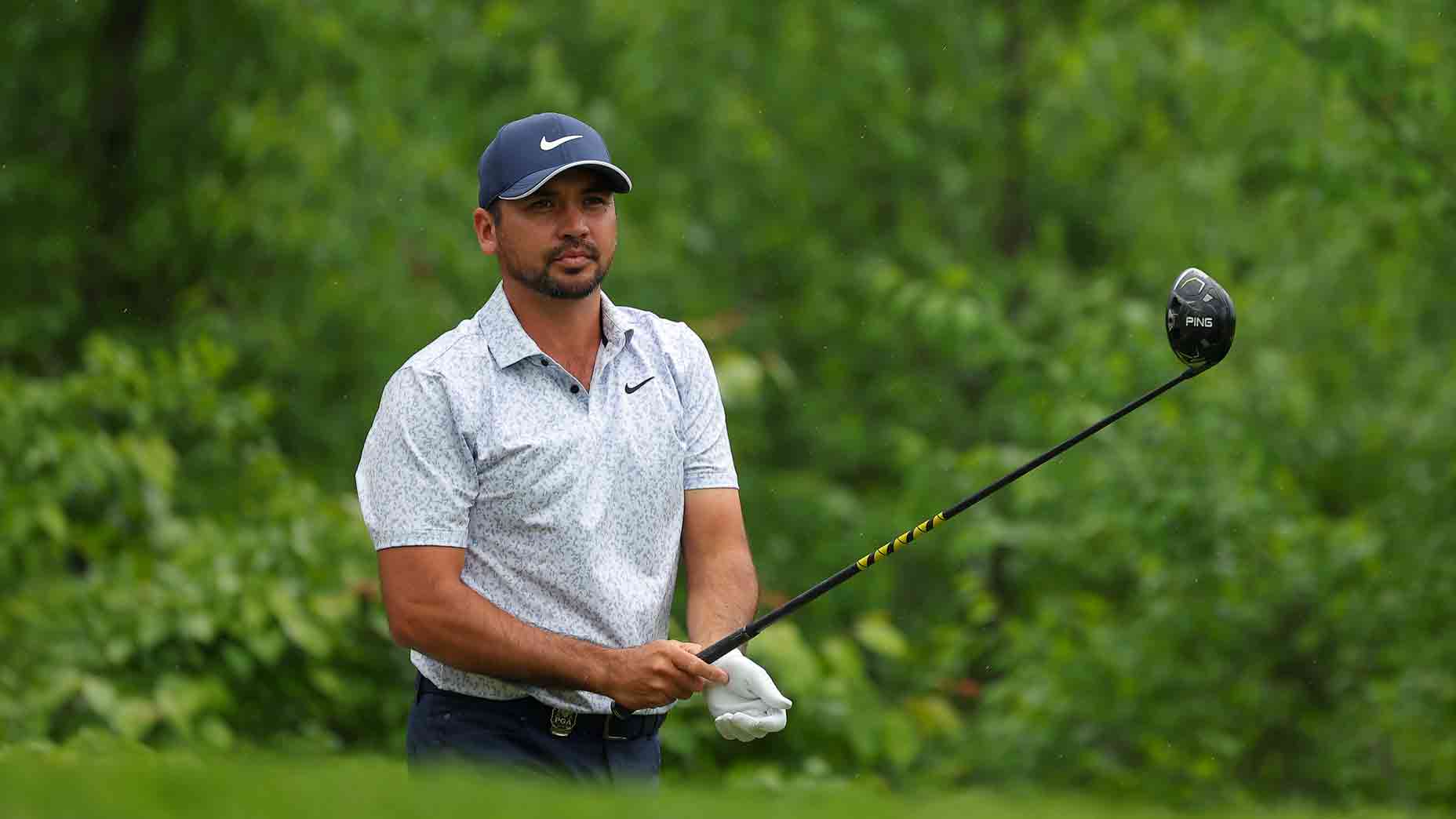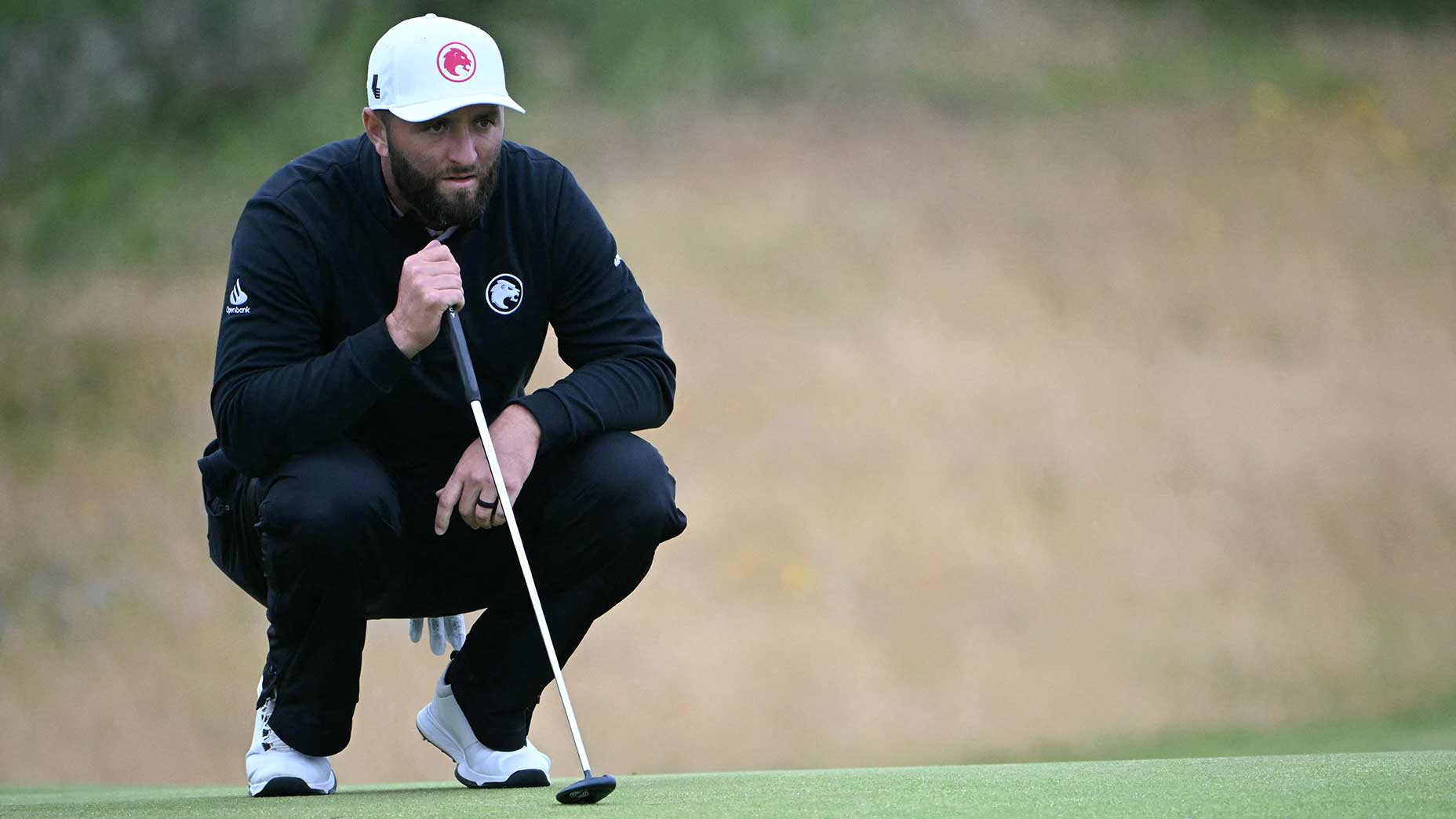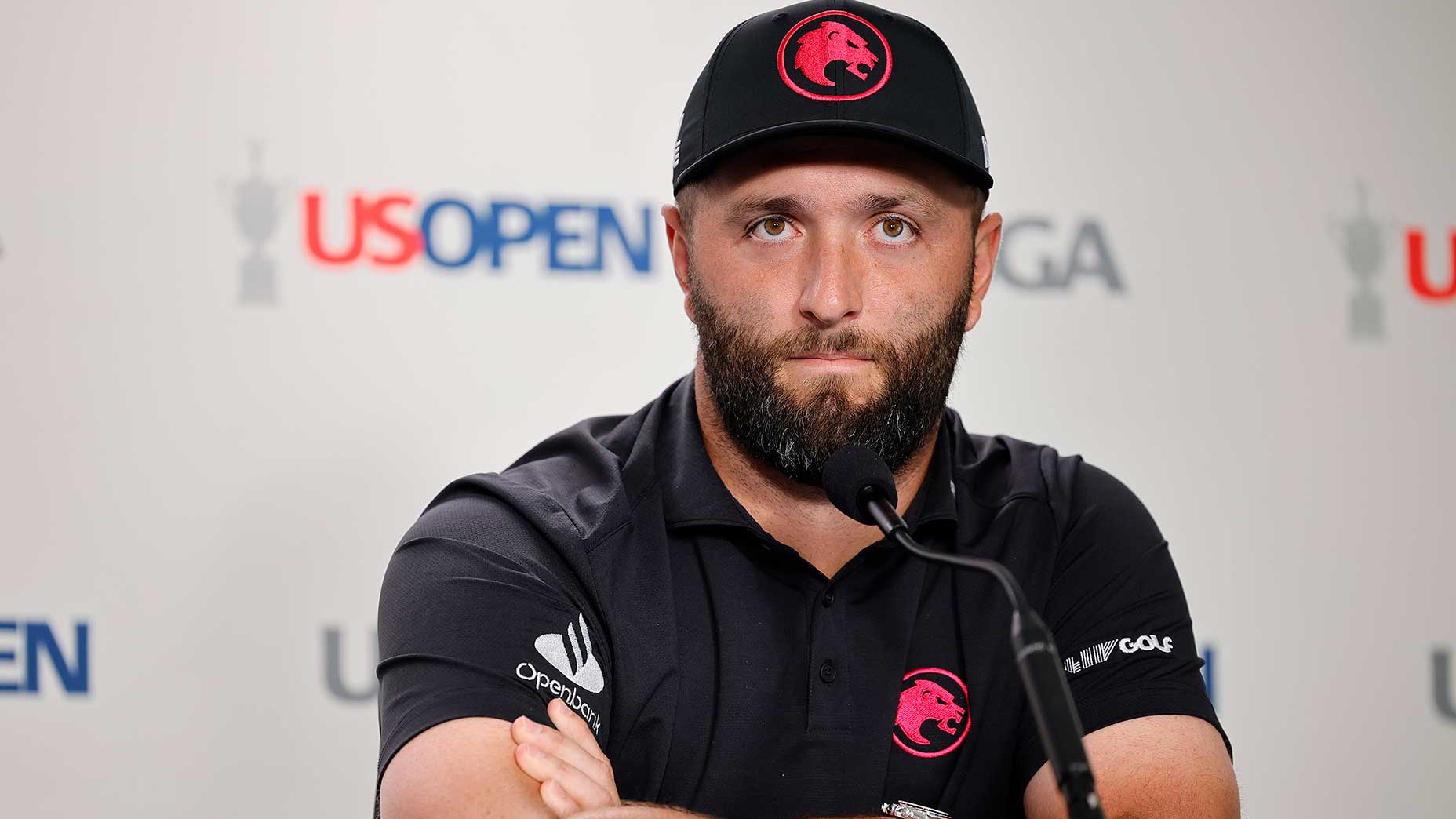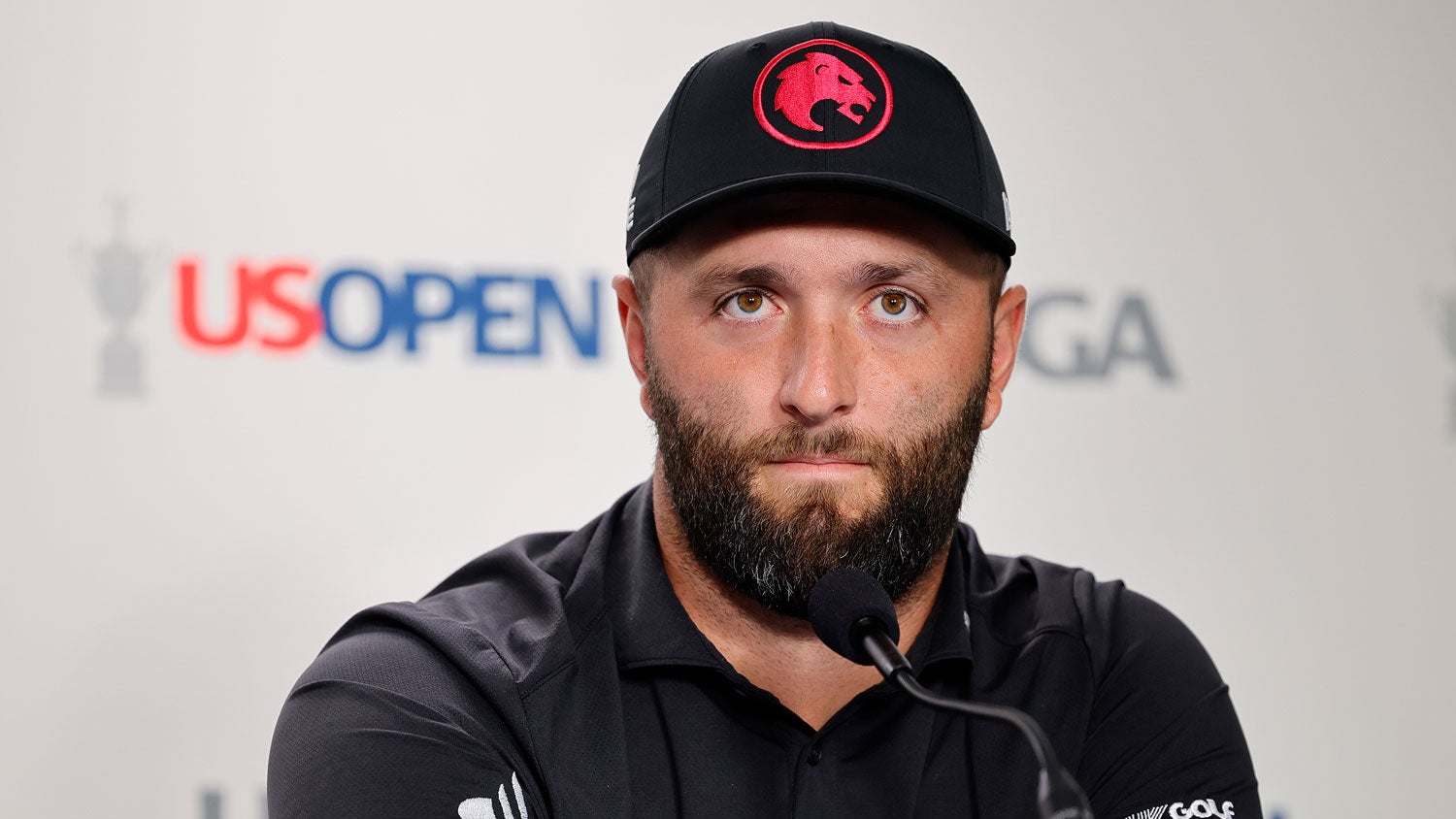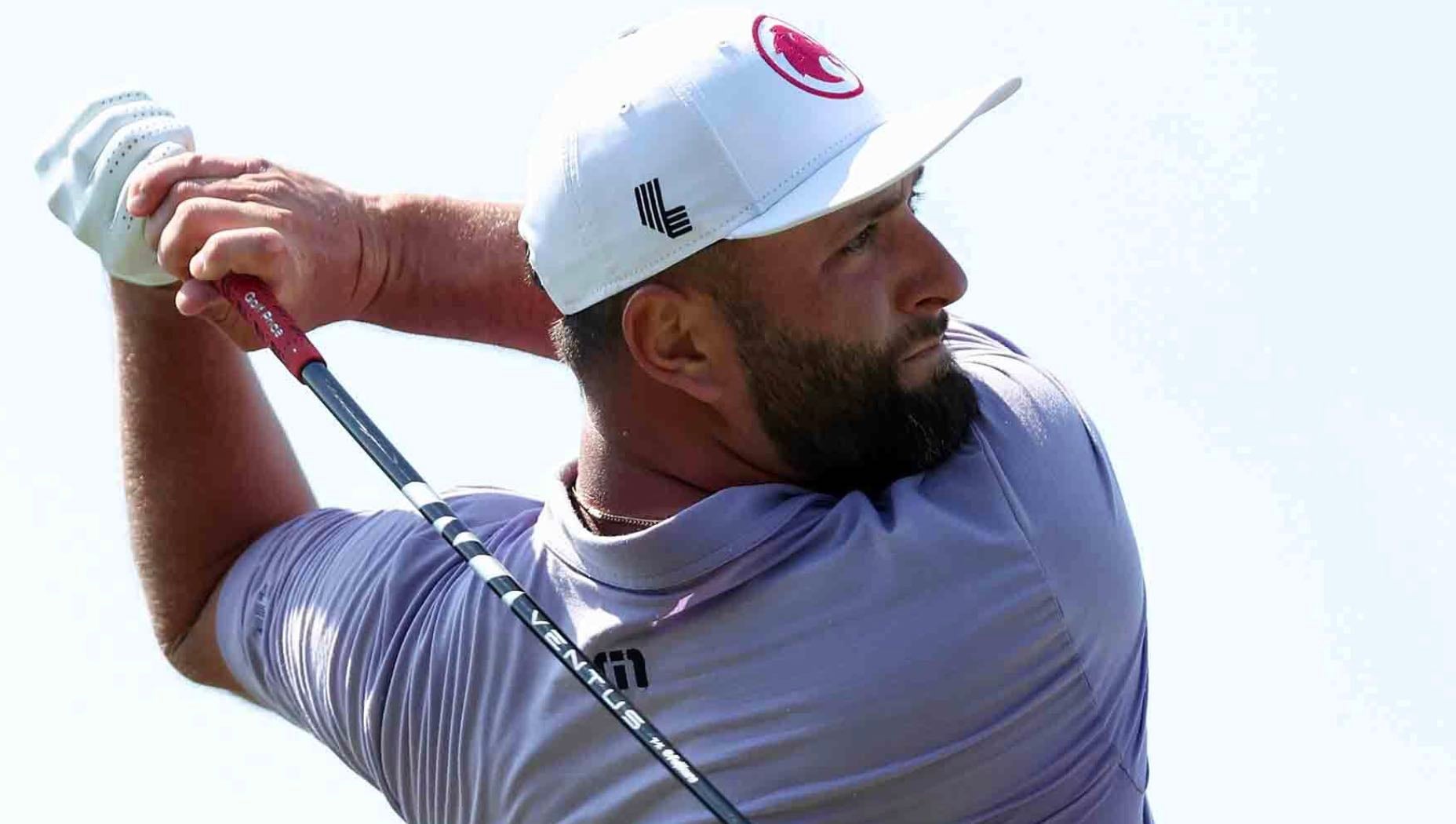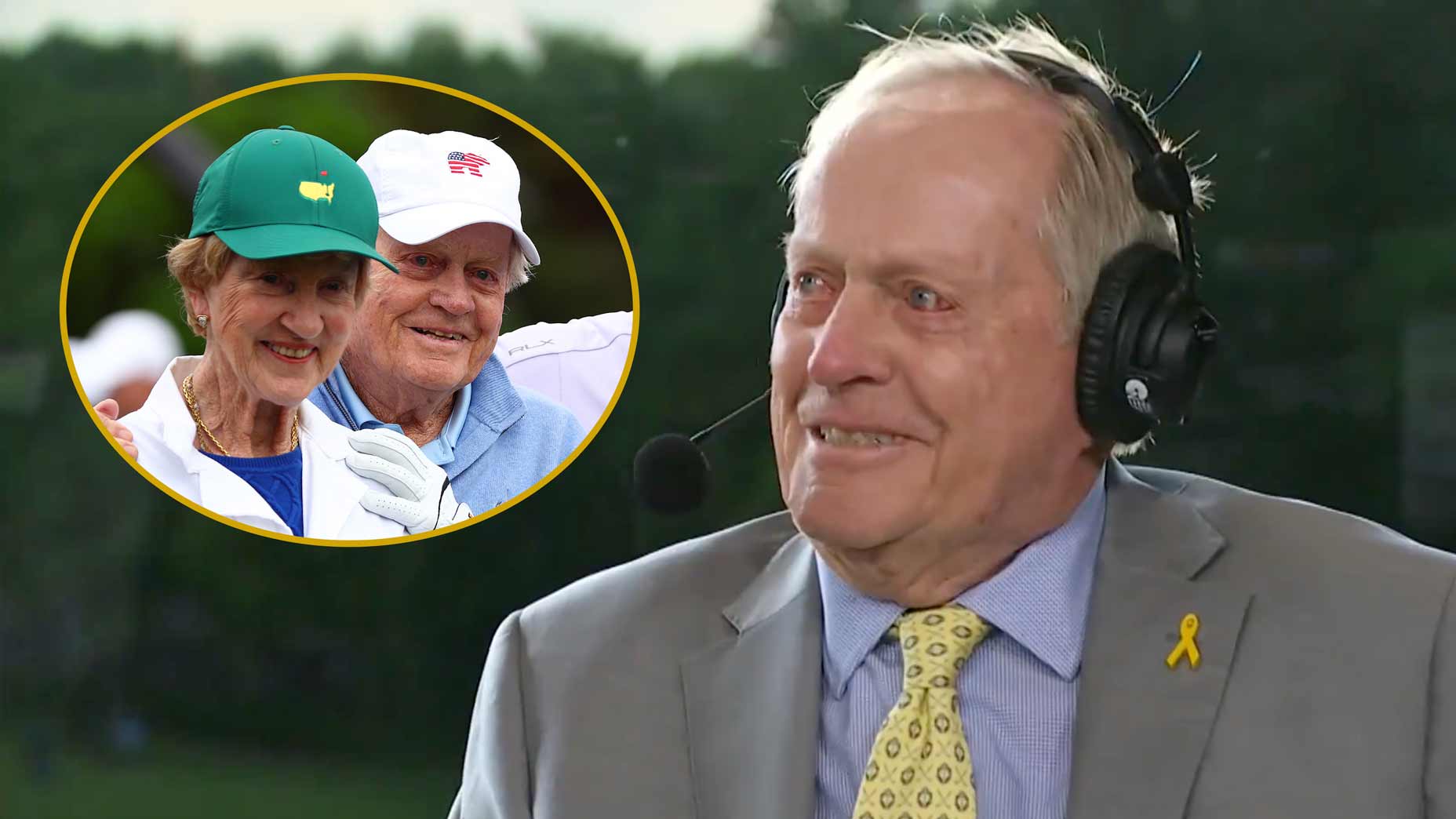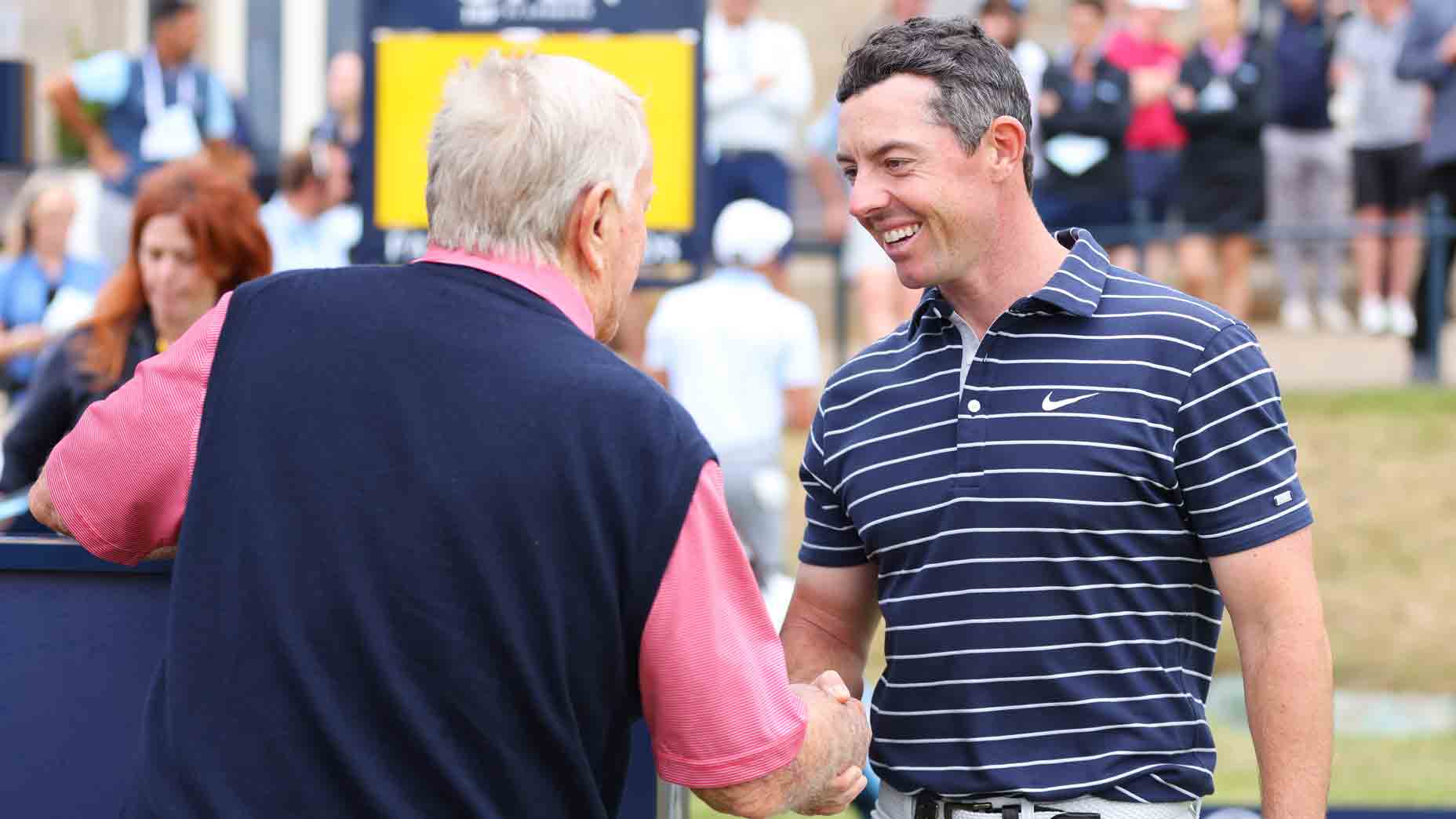Why Jon Rahm changed his mind on two hot-button Tour topics

Jon Rahm addressed the media ahead of this year's Memorial Tournament.
Getty Images
There’s a famous quote from George Bernard Shaw about open-mindedness. “Those who cannot change their minds,” he said,” cannot change anything.”
Shaw was an Irish playwright born in Dublin, Ireland. And while we may not lean on his wisdom particularly often on this website (he also once referred to golf as “typical capitalist lunacy”) the PGA Tour arrived in Dublin, Ohio this week, and a couple comments on Tuesday called Shaw’s words to mind.
World No. 2 Jon Rahm took to the podium to address the media ahead of the Memorial Tournament. He paid his respects to the tournament host, speaking to Jack Nicklaus’ legacy and just how much it means for the winner to shake his hand behind the 18th green. He complimented the golf course, which was difficult before and got several steps tougher after the recent renovation. And then he got into the meatier topics of the day, the hot-button issues at the center of the PGA Tour’s future. Rahm hasn’t shied away from LIV-Tour dynamics nor has he always toed the party line. That’s what makes it interesting to hear him think through golf’s open questions. And it was refreshing to hear him admit something on Tuesday: that he’s changed his mind. Twice!
First came the issue of cuts. Next year’s designated events are set to feature limited fields of 70-80 players and most if not all of those events will eliminate their cuts. There are positives to a no-cut concept, namely ensuring to sponsors and fans that every top dog will be there on the weekend. But the cut has always been a part of the storyline at big-time golf tournaments; reducing the field to its contenders at its halfway mark has been a longstanding tradition. And while the PGA Tour has had a handful of no-cut events for multiple decades, having this many of its flagship events discard the cut does make for a significant change.
Still, it’s possible that a few events — like the invitationals at Riviera, Bay Hill and Memorial — could retain their cut structures even with limited fields. Cue Rahm, who illustrated just how thorny the topic can be.
“I’ve gone back and forth on this issue,” he said. “I at first was an advocate for no cut and the more time has gone by I’ve become an advocate for a cut.”
Why is that? Rahm said he thinks the pressure and drama of making the weekend — even if it just means eliminating the bottom 20 players in a limited field — outweighs whatever you’d lose by not having those 20 players on the weekend.
“I think it’s a part of it,” Rahm said. “You earn your way into the weekend and then you earn that win.”
Rahm has spent most of his time recently at the top of the leaderboard rather than the middle, but after he opened with 76 at the PGA Championship he found himself grinding to make the weekend. He appreciated the urgency of that task. He pulled it off, too, even though he stalled out on the weekend and finished just T50.
“It’s a different type of pressure and you never know what playing good on a Friday to make the cut might ignite towards the weekend,” he said. “So I think it’s a part of it. It’s a part of the history. If that went away, Tiger [Woods] making [a PGA Tour-record] 140-something cuts in a row wouldn’t have the same significance because that would never be broken again. So, like I said, I pushed for the no cut and then as time has gone by I actually, I think we should have a cut.”
It wasn’t a specific conversation that changed his mind, Rahm said. He just thought more about it and what he values about his place in the game.
“I take pride on being a consistent player and making a lot of cuts and giving myself chances to win,” he said. “I think that’s important.”
Rahm added that an effective comparison would be the Masters, which already has a field that looks a lot like he expects the designated events to look next year.
“Eighty-some players. And there’s a cut and no one says anything about it,” he said. “Tiger tying that record of 23 cuts in a row means something. So I think the historian [in me] and the person who is in love with the game kind of went back and realized that it’s something that I actually enjoy a lot.”
Reporters were treated to the full spectrum of opinions on the cut/no-cut issue Tuesday; Nicklaus himself declared, “I don’t like it, but I do like it,” and later added that he didn’t particularly care one way or the other. Patrick Cantlay, a two-time winner at this event, succinctly stated his preference for no cuts.
“With it being a limited field I don’t think it makes sense to have a cut. I think there’s real power in knowing that the best players are going to be there all four days no matter what,” he said.
So, yeah. We haven’t exactly settled that debate. But it’s hard not to admire Rahm’s willingness to think through things and admit he’s changed his stance. That brings us to topic No. 2, a rules issue that’s been in the discourse coming off the PGA Championship, where distance-measuring devices are permitted despite an existing ban on the PGA Tour.
Rahm spoke to the issue in the context of slow play. First he went out of his way to vouch for Cantlay, who has taken significant heat for slow play in the penultimate group at the Masters despite what Rahm said was a situation that was “taken out of context.” Slow play, he said, is largely an issue of course setup and field size. But he added that distance-measuring devices could, in some cases, make a difference.
“I think rangefinders would help,” he said. “Again, an issue I used to advocate against and now I’m for. And my mind changed at [the 2021 PGA at] Kiawah when, with those heavy winds, you could go sideways into those sand dunes and a caddie could take quite a while to get a number when they could just shoot it and be done in three seconds. So I think when we’re in the fairway it won’t make much of a difference, but those situations where you’re a bit off line it might save quite a bit of time.”
That’s another reasoned and reasonable opinion on a thorny issue from the World No. 2. It’s also the voice of a man who knows he’ll be part of the group of players helping shape the game’s future. When Rahm speaks, other pros listen.
On Tuesday he used that voice to advocate for the inclusion of LIV golfers in the Ryder Cup (“It’s a little sad to me that politics have gotten in the way of such a beautiful event”) and to comment on Phil Mickelson’s take that LIV provides the best preparation for majors (“Phil is a friend of mine, but what else is he going to say, right? He’s obviously going to advocate for his side and that’s perfectly fine”) and the PGA Tour’s product (“we’re slowly making that transition into what we think is going to be a better Tour”). And he acknowledged there are others alongside him helping weigh in on these decisions.
“I think it’s a group effort,” he said.
Not a bad guy to have on your team.

